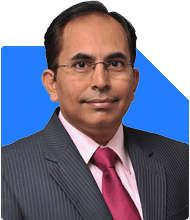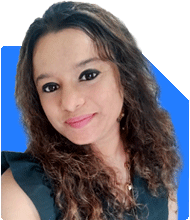33-Year-Old Man with Rs. 6 Lakh Gratuity: How to Invest for Aggressive Growth?
Janak Patel |72 Answers |Ask -Follow
MF, PF Expert - Answered on Apr 09, 2025
He is the CEO and founder of InfiniumWealth, a firm that specialises in designing goal-specific financial plans tailored to help clients achieve their life goals.
Janak holds an MBA degree in finance from the Welingkar Institute of Management Development and Research, Mumbai, and has over 15 years of experience in the field of personal finance. ... more

Hi Sir, I'm(33yo /M) looking for guidance on investing rs6 lakhs from my gratuity. I've a diversified portfolio including debt, equity and gold. I'm aiming for growth over a 3-4 year timeframe,(aggressive mindset) but I'm also mindful of the current equity market risks. Could you pls advise investment options that align with my risk tolerance and growth objectives? (Prefer: Gold or Equity Market)
As you have already mentioned you have a aggressive approach and time frame for investment in 3-4 years, I would recommend you to consider either a Balance Advantage MF scheme or an Aggressive Hybrid MF scheme. These schemes have proved to generate good alpha and with a portion in Debt it can protect downside to a certain extent.
As you are young and can take risk, you can also consider equity MF schemes. Consider Large cap or Mid cap equity MF schemes. They can provide growth over the time frame mentioned but understand the risks involved too. Return and risk are both on higher side. So if you can manage a downside risk and can extend your time frame - if the market has taken a downturn around 3-4 years, then extend your time in the market with this option.
Also considering the current market turmoil that we are witnessing - Trump's tariff war (today China has got 104% tariff), the world economies are going to be volatile and at such times Gold becomes a good option/hedge. But consider Gold as part of overall portfolio and allocate up to 10% to it.
Asset allocation has proved to be a great tool to overcome volatility and manage risks.
Please note any option you consider will come with its own risk and volatility. So proceed with a mindset to extend your time in the investment if its required.
Thanks & Regards
Janak Patel
Certified Financial Planner.
You may like to see similar questions and answers below
Ramalingam Kalirajan |10902 Answers |Ask -Follow
Mutual Funds, Financial Planning Expert - Answered on Apr 24, 2024
Jinal Mehta | Answer |Ask -Follow
Financial Planner - Answered on Feb 25, 2024
Ramalingam Kalirajan |10902 Answers |Ask -Follow
Mutual Funds, Financial Planning Expert - Answered on May 26, 2024
Ramalingam Kalirajan |10902 Answers |Ask -Follow
Mutual Funds, Financial Planning Expert - Answered on Apr 30, 2024
Ramalingam Kalirajan |10902 Answers |Ask -Follow
Mutual Funds, Financial Planning Expert - Answered on Apr 04, 2025
Samraat Jadhav |2514 Answers |Ask -Follow
Stock Market Expert - Answered on Dec 18, 2025
Reetika Sharma |432 Answers |Ask -Follow
Financial Planner, MF and Insurance Expert - Answered on Dec 18, 2025
Reetika Sharma |432 Answers |Ask -Follow
Financial Planner, MF and Insurance Expert - Answered on Dec 18, 2025
Reetika Sharma |432 Answers |Ask -Follow
Financial Planner, MF and Insurance Expert - Answered on Dec 18, 2025
Samraat Jadhav |2514 Answers |Ask -Follow
Stock Market Expert - Answered on Dec 18, 2025

Kanchan Rai |648 Answers |Ask -Follow
Relationships Expert, Mind Coach - Answered on Dec 18, 2025
Kanchan Rai |648 Answers |Ask -Follow
Relationships Expert, Mind Coach - Answered on Dec 18, 2025
Anu Krishna |1754 Answers |Ask -Follow
Relationships Expert, Mind Coach - Answered on Dec 18, 2025
Anu Krishna |1754 Answers |Ask -Follow
Relationships Expert, Mind Coach - Answered on Dec 18, 2025
Anu Krishna |1754 Answers |Ask -Follow
Relationships Expert, Mind Coach - Answered on Dec 18, 2025

























